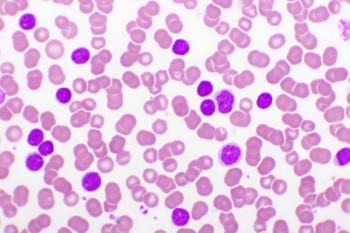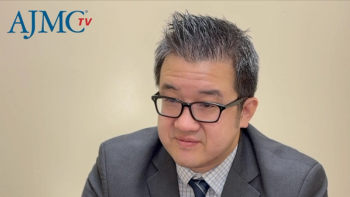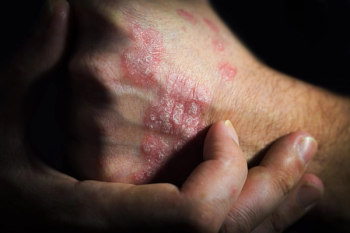
"Exceptionally Long" PFS Projected With Daratumumab Quadruplet for Multiple Myeloma: Pieter Sonneveld, MD, PhD
Pieter Sonneveld, MD, PhD, chair of the Erasmus MC Cancer Institute, discussed the findings of a study modeling long-term progression-free survival (PFS) in patients with multiple myeloma (MM) treated with a daratumumab quadruplet regimen.
The PERSEUS (NCT03710603) and CEPHEUS (NCT03652064) trials both demonstrated improved depth and duration of responses and progression-free survival (PFS) with a quadruplet regimen of daratumumab plus bortezomib (Velcade), lenalidomide (Revlimid), and dexamethasone (VRd) in patients with
To better inform clinical decision-making and economic evaluations, it is important to model long-term PFS outcomes in these patient populations, Pieter Sonneveld, MD, PhD, professor of hematology and chair of the Erasmus MC Cancer Institute in Rotterdam, Netherlands, told The American Journal of Managed Care®. In research presented at the 2025 European Myeloma Network meeting held in Athens, Greece, Sonneveld and colleagues modeled long-term PFS in transplant-eligible and transplant-ineligible patients using data from PERSEUS and CEPHEUS, respectively.
In this interview, Sonneveld spoke to the modeling strategy used in the study and discussed the key findings.
This transcript has been lightly edited; captions were auto-generated.
Transcript
Can you describe the modeling strategy used to predict long-term outcomes for patients receiving frontline quad therapy of daratumumab plus VRd?
In the PERSEUS trial for transplant-eligible patients and in the CEPHEUS trial for non–transplant-eligible patients, both in first-line treatment approaches, the addition of daratumumab to VRd was investigated. In both trials, after a median follow-up of approximately 4 years—a bit longer for CEPHEUS—both trials showed a significant benefit of adding daratumumab for progression-free survival.1,2 The hazard ratios are very low for daratumumab added to the VRd compared with VRd, and this is very promising. However, at 4 years, for example, in PERSEUS, the progression-free survival observed at that time was 84%, which is a long way from reaching the median. And also for CEPHEUS, there was, let's say, a long way to go before the median would be reached for the [daratumumab plus VRd] arm.
This encouraged us to apply mathematical modeling—statistical modeling, if you wish—to the data based on the approach that is already used for many years by the
What was observed is that, for example, in PERSEUS, the calculated PFS using this modeling and selecting the best fit out of those 7 different models would be 205 months; it is approximately 17 years, which is exceptionally long, almost hard to believe, but it indicates that there is a big gap between the actual observed median PFS and the calculated PFS. We had no observed median PFS for both trials. We know the PFS at 4 years, but it doesn't tell the whole story. To calculate the median PFS by these models makes sense, and the outcome shows that these patients will have a long progression-free survival to expect when they complete this treatment. This is important information not only for the patients but also for the regulatory people, for the payers, and I think for the whole medical community.
References
1. Sonneveld P, Dimopoulos MA, Boccadoro M, et al. Daratumumab, bortezomib, lenalidomide, and dexamethasone for multiple myeloma. N Engl J Med. 2024;390(4):301-313. doi:10.1056/NEJMoa2312054
2. Usmani SZ, Facon T, Hungria V, et al. Daratumumab plus bortezomib, lenalidomide and dexamethasone for transplant-ineligible or transplant-deferred newly diagnosed multiple myeloma: the randomized phase 3 CEPHEUS trial. Nat Med. 2025;31(4):1195-1202. doi:10.1038/s41591-024-03485-7
3. Sonneveld P, Zweegman S, Facon T, et al. Modeling long-term progression-free survival in transplant-eligible and transplant-ineligible newly diagnosed multiple myeloma treated with daratumumab, bortezomib, lenalidomide, and dexamethasone. Presented at: 6th European Myeloma Network Meeting; April 10–12, 2025; Athens, Greece. Abstract B04.
Newsletter
Stay ahead of policy, cost, and value—subscribe to AJMC for expert insights at the intersection of clinical care and health economics.












































